Kenya 2016 – Hell’s Gate National Park and Arabuko-Sokoke Forest
Kenya 2016 – Arabuko-Sokoke Forest and Hell’s Gate National Park
Zachary Harris
Introduction
This winter I went on a family vacation to Kenya for nine days in over the Winter Holidays. Time constraints and budgets prohibited me from exploring the more famous national parks such as Masai Mara or Amboseli. However, I still got to do some quality mammal-watching in Hell’s Gate National Park and the Arabuko-Sokoke Forest. I saw twenty mammal species in all (though my two squirrel ID’s are not 100% certain). None were particularly rare, though it was exciting to see the endemic Golden-Rumped Elephant Shrews.
Day 1 12/25/2016
- Arrived in Nairobi late at night. Saw some microbats flying around the floodlights at the airport’s exit.
Day 2 12/26
- Stayed at the Milimani Backpackers Hostel in the Karen neighborhood of Nairobi. Saw a Black Kite and a squirrel species, probably an Ochre Bush Squirrel.
- Visited City Park in the afternoon. The park is home to hundreds of Blue Monkeys. They are quite used to human presence and made excellent photography models. The park is mostly lawn but there is a river bordered by a forest flowing through it. I found a pair of Hadada Ibis near the water.
- Pied crows are plentiful around city.
Day 3 12/27
- Early morning in Milimani garden saw a robin chat species.
- Hired a driver to take us to Hell’s Gate National Park, about 2.5 hours from Nairobi. Saw a flock of Helmeted Guineafowl on the road.
- Saw a Hammerkop nest at Elsa Gate.
- At the entrance to the Gorge trail saw Vervet Monkeys and Olive Baboons.
- Driving and hiking around Hell’s Gate saw Plains Zebras, Common Warthogs, Maasai Giraffe, Cape Buffalo, Eland, Impala, Thomson’s Gazelle, and Grant’s Gazelle. Also saw Abyssinian Wheatear, Red-billed Oxpecker, Black-headed Heron, Cattle Egret, Superb Starling and an impressive Verreaux’s Eagle.
- Stopped near Lake Naivasha to eat. Hippo’s can be found there, though we didn’t see any. I did get some excellent shots of Yellow-billed Stork, Sacred Ibis, Grey Heron, and African Jacana.
Day 4 12/28
- Visited the Nairobi Botanical Gardens next to the National Museum. Decent birding area. In a half hour walk I was able to ID a Speckled Mousebird, African Paradise-Flycatcher, and a Cinnamon Chested Bee-eater. There were multiple other birds I couldn’t get good enough pictures to identify.
- Saw a few small lizards sunning themselves in the courtyard. Too skittish to get an idea but I’d guess I saw at least one skink species and a gecko of the Hemidactylus genus.
Day 5 12/29
- Hired a driver to take us from Nairobi to Mombasa. Passed Nairobi National Park where we saw Marabou Stork, Wildebeest, Maasai Giraffe, and Plains Zebra from the road.
- A few hours later passed through Tsavo. Saw a magnificent African Bush Elephant along with a pair of Common Warthogs.
- At the Voi gas station saw a Kenyan Rock Agama.
Day 6 12/30
- Stayed in Diani Beach. On the beach found some Ghost Crabs, Hermit Crabs, Common Ringed Plover, and Grey Heron. Further in shore found some Red-cheeked Cordon Bleus, Giant Millipedes, a White-headed Dwarf Day Gecko and Angolan Colobus Monkeys. Did some snorkeling right off the beach. The reef was mostly dead but I heard that farther offshore there are some better reefs.
- Saw a troop of Vervet Monkeys at a store in town.
Day 7 12/31
- Spent the day sick at Midas Ecocamp. I stayed entertained by watching the White-headed Dwarf Day Geckos on the balcony.
Day 8 1/1
- Woke up late at Midas Ecocamp. Saw a squirrel from the balcony. My blurry picture made identification difficult but I believe it was a Red Bush Squirrel.
- Hired a boat to take us out to the coral reef at the Watamu Marine Reserve. While on the water saw a large pod of Indo-Pacific Bottlenose Dolphins. Also saw Lesser Crested Terns, an African Fish Eagle, and a Green Sea Turtle. Did some fantastic snorkeling on Watamu’s fairly healthy reef.
Day 9 1/2
- Set off at 6:00am from Midas Ecocamp for a hike in the Arabuko-Sokoke Forest with the same guide from the previous day – Hassan from www.ecologicaltourskenya.com (Highly recommeded). Before we were even off the property we had already seen half a dozen Golden-Rumped Elephant Shrews scurrying about the brush. We took a 10 minute motorcycle taxi to the forest entrance, passing a troop of Yellow Baboons on the way.
- While hiking through the forest we saw many more Golden-Rumped Elephant Shrews, a single Blue Monkey along with a small group of Suni Antelope. Apparently, the best way to see the Elephant Shrews is to hike as early as possible. We met some very dissapointed travelers who had failed to spot any because they were searching at midday.
- The forest’s birdlife proved prolific. In a short two hour hike we saw African Goshawk, Tambourine Wood Dove, Green-backed Camaroptera, European Honey Buzzard, Trumpeter Hornbill, Tropical Boubou, Black-bellied Starling, Forest Weaver, and White-throated Bee-eater.
- Reptiles: Tropical House Gecko, Flat-headed Leaf Toed Gecko, White-headed Dwarf Day Gecko, Tropical Girdled Lizard, and Speke’s Sand Lizard
- The forest is famous for its butterflies and it is easy to see why. I saw a wide variety of very colorful species, including a Citrus Swallowtail, Blue Pansy, Larger Striped Swordtail, and three unknown Pieridae species. I also found another Giant Millepede.
Conclusion
Undoubtedly the best way to see mammal’s in Kenya is a large organized saffari in a park such as Masai Mara. However, for those put off by the cost of such an expedition, there are alternatives. From Nairobi it is only a 2.5 hour drive to Hell’s Gate National Park. Hiring a car and driver for the day only costed us about 160 USD, which was far less than we would have payed for admission and safari at Nairobi National Park. Alternatively, one could take a Matatu (minibus) from Nairobi city center for only about 10-20 USD round trip and explore the park on foot or rented mountain bike. Hell’s Gate is also close enough to Lake Naivasha to visit both in the same day. From Nairobi it is a short flight or eight hour bus/car ride to Mombassa, the starting place for any exploration of the coastal region. Alternatively, there is a recently re-opened train that runs twice a week from Nairobi to Mombasa. It is an 18 hour night train but apparently passes through Nairobi National and Tsavo during daylight hours allowing for excellent wildlife watching. The highway also runs through the park. From Mombasa, it is an easy 2-3 hour drive by bus or car to Arabuko-Sokoke. For those interested in exploring the park I highly recommend staying at Mida Ecocamp. It is a community run hostel that provides scholarship for local children. And Golden-Rumped Elephant Shrews can be seen on-site in the early morning! They have great contacts with the local guides, which is essential for exploring the forest. Overall, Kenya fully meets its excellent mammal-watching reputation, even for budget travelers.
Mammals
Ochre Bush Squirrel
Paraxerus ochraceus
Red Bush Squirrel
Paraxerus palliatus
Blue Monkey
Cercopithecus mitis
Vervet Monkey
Chlorocebus pygerythrus
Olive Baboon
Papio anubis
Yellow Baboon
Papio cynocephalus
Angolan Colobus Monkey
Colobus angolensis
Plains Zebra
Equus quagga
Common Warthog
Phacochoerus africanus
Maasai Giraffe
Giraffa camelopardalis tippelskirchi
Cape Buffalo
Syncerus caffer
Eland
Taurotragus oryx
Impala
Aepyceros melampus
Thomson’s Gazelle
Eudorcas thomsonii
Grant’s Gazelle
Nanger granti
Blue Wildebeest
Connochaetes taurinus
Suni Antelope
Neotragus moschatus
African Bush Elephant
Loxodonta africana
Indo-Pacific Bottlenose Dolphins
Tursiops aduncus
Golden-Rumped Elephant Shrews
Rhynchocyon chrysopygus
Birds
Black Kite
Milvus migrans
Verreaux’s Eagle
Aquila verreauxii
African Fish Eagle
Haliaeetus vocifer
African Goshawk
Accipiter tachiro
European Honey Buzzard
Pernis apivorus
Hadada Ibis
Bostrychia hagedash
Cattle Egret
Bubulcus ibis
Black-headed Heron
Ardea melanocephala
Yellow-billed Stork
Mycteria ibis
Sacred Ibis
Threskiornis aethiopicus
Grey Heron
Ardea cinerea
African Jacana
Actophilornis africanus
Hammerkop
Scopus umbretta
Marabou Stork
Leptoptilos crumenifer
Helmeted Guineafowl
Numida meleagris
Common Ringed Plover
Charadrius hiaticula
Lesser Crested Tern
Thalasseus bengalensis
Trumpeter Hornbill
Bycanistes bucinator
Pied Crow
Corvus albus
Abyssinian Wheatear
Oenanthe lugubris
Superb Starling
Lamprotornis superbus
Red-billed Oxpecker
Buphagus erythrorhynchus
Speckled Mousebird
Colius striatus
African Paradise-Flycatcher
Terpsiphone viridis
Cinnamon Chested Bee-eater
Merops oreobates
White-throated Bee-eater
Merops albicollis
Red-cheeked Cordon Bleu
Uraeginthus bengalus
Tambourine Wood Dove
Turtur tympanistria
Green-backed Camaroptera
Camaroptera brachyura
Tropical Boubou
Laniarius aethiopicus
Black-bellied Starling
Lamprotornis corruscus
Forest Weaver
Ploceus bicolor
Reptiles
Green Sea Turtle
Chelonia mydas
Kenyan Rock Agama
Agama lionotus
Tropical Girdled Lizard
Cordylus tropidosternum
Speke’s Sand Lizard
Heliobolus spekii
White-headed Dwarf Day Gecko
Lygodactylus picturatus
Tropical House Gecko
Hemidactylus mabouia
Flat-headed Leaf Toed Gecko
Hemidactylus platycephalus
Misc
Larger Striped Swordtail Butterfly
Graphium antheus
Blue Pansy Butterfly
Junonia oenone
Citrus Swallowtail Butterfly
Papilio demodocus
Colotis sp
Colotis sp
Ghost Crabs
Ocypodidae sp
Hermit Crabs
Paguridae sp
Juliformia sp
Juliformia sp
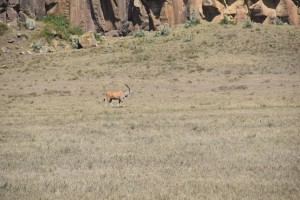
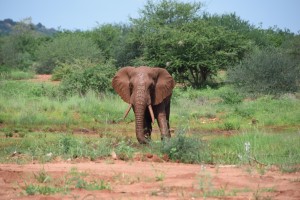
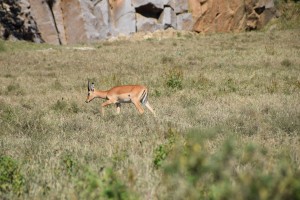
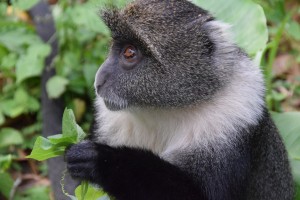
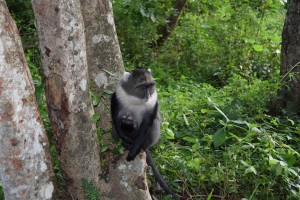
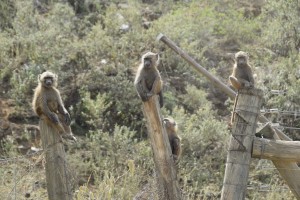


Leave a Reply
You must be logged in to post a comment.